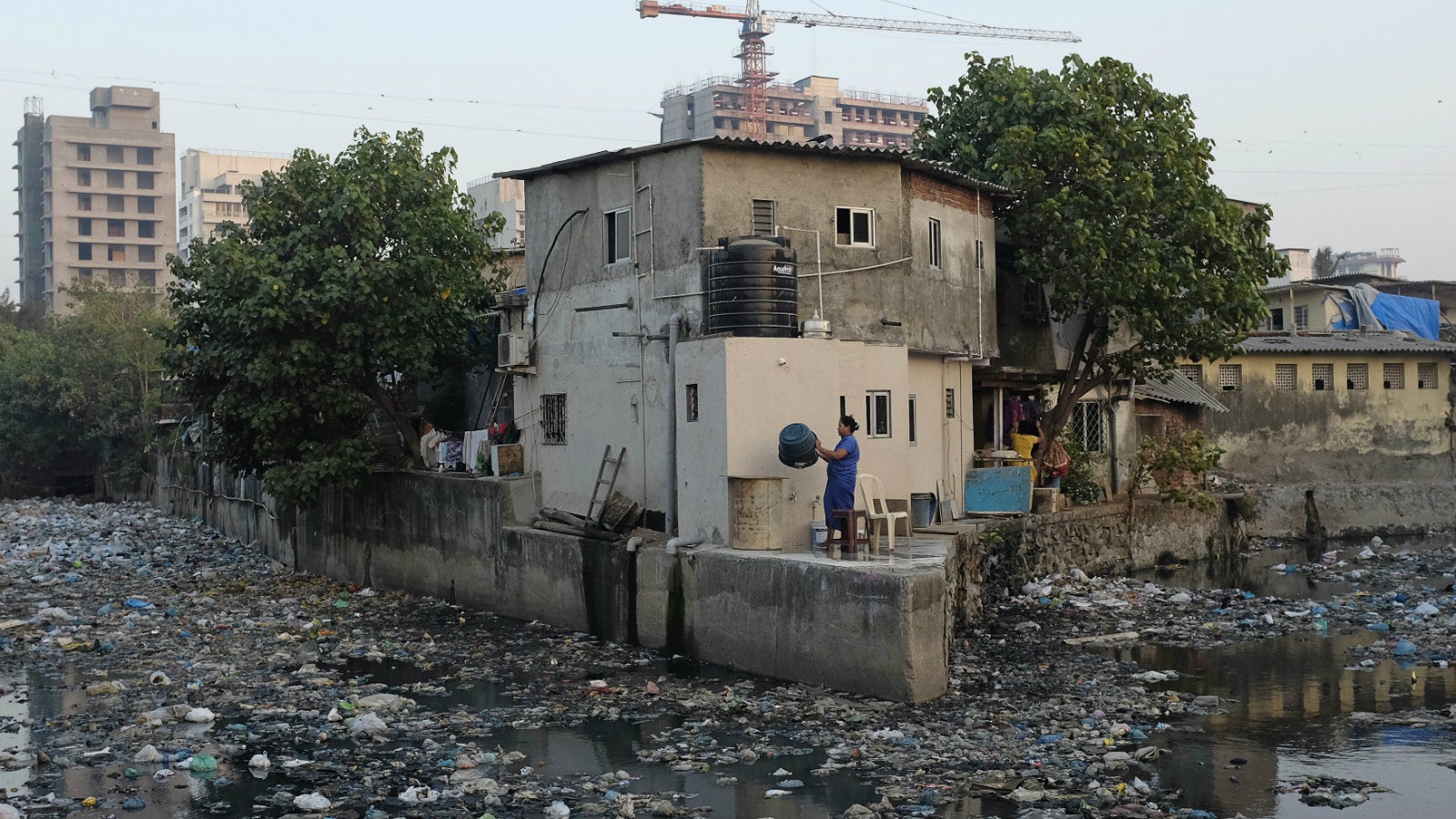Toilet, toilet everywhere in India, but where does all the shit go?
India is building millions of toilets, but the waste management system across large parts of the country is a stinking mess.


India is building millions of toilets, but the waste management system across large parts of the country is a stinking mess.
After Narendra Modi came into power in 2014, the prime minister announced that building toilets and raising the country’s overall cleanliness level was a priority for him.
The Swachh Bharat (Clean India) campaign, launched in October 2014 with celebrity endorsements and an advertisement budget of Rs170 crore ($25 million), has delivered on the promise of building 5.8 million toilets in 2014-15, against a target of five million.
But a recently released government report (pdf) highlights the poor state of waste management in the country: most villages have no arrangement for disposal of drainage water, urban areas can’t quite manage their waste, and community toilets aren’t cleaned regularly.
The government report includes results of a survey conducted by the National Sample Survey Office (NSSO) between May and June 2015 that looked into 3,788 villages and 2,907 urban blocks.
No drainage systems
Rural India hardly has any arrangement to dispose off liquid waste.
Only 56.4% of the urban wards have a sewer network. According to estimates, about 80% of the sewage in India flows into rivers, lakes and ponds. This sewage is untreated and pollutes water bodies. It also often seeps underground, which is a cause of concern, since drinking water is primarily sourced from groundwater.
Filthy toilets
The survey results also show that 22.6% of the villages and 8.6% of urban wards—urban administrative divisions—do not have anyone to clean community toilets used by locals. Filthy toilets already are one of the biggest reasons for skin ailments and urinary tract infections among Indian women. Besides, fecal waste breeds over 200 viruses.
Garbage disposal nightmare
Few villages in India have a garbage disposal system. Most residents just dump waste outside homes or, with some effort, find a spot in nearby agricultural fields.
Urban garbage dumps
India’s urban areas are only a little better than the hinterlands. Although 64% of urban wards have a dumping place for solid waste, only 48% these are cleaned daily.
In India’s biggest cities, including Delhi and Mumbai which are already facing space crunch, garbage is often dumped in open spaces. These spaces have eventually grown into small hillocks of waste.
Waste management in cities
Only 43% of the urban wards have a door-to-door waste collection system. Besides, as of January 2016, only 18% of the total waste generated was processed.
Lack of waste management undermines the main purpose of building toilets. Improper waste management leads to at least 22 diseases in India, research shows (pdf). Here’s what Sunita Narain, an environmentalist with the Delhi-based Centre for Science and Environment, wrote in the Business Standard newspaper on April 10:
My colleagues studied the excreta sums of different cities. The city “shit-flow” diagram shows that the situation is grim, as all cities either do not treat or safely dispose of the bulk of human excreta. This is because we often confuse toilets with sanitation. But the fact is that toilets are mere receptacles to receive waste; when we flush or pour water, the waste flows into a piped drain, which could be either connected, or not, to a sewage treatment plant (STP). This STP could be working, or not. In this case, the faecal sludge-human excreta-could be conveyed, but not safely disposed as it would be discharged into the nearest river, lake or a drain. All this will pollute.